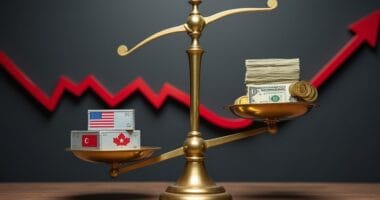A new study paints a grim picture for America’s poorest households under proposed tariffs – they’ll lose 5.5% of their disposable income while the wealthy take just a 2.1% hit. Low-income families could see their budgets shrink by $980 annually, nearly triple the impact on rich households. The middle class isn’t spared either, facing $3,800 in yearly losses. With everyday necessities like food and clothing affected, the gap between rich and poor grows wider.

While the Trump administration touts its latest round of tariffs as a way to boost American prosperity, new economic analysis reveals these trade policies are hitting low-income Americans the hardest. The numbers paint a stark picture: the poorest households could see their disposable income plummet by 5.5% under a 20% tariff scenario, while the wealthiest would only experience a 2.1% drop.
Let that sink in. The impact on America’s poorest families is nearly three times worse than what the rich will face. For families in the second-lowest income bracket, Trump’s April 2025 tariff policy means kissing goodbye to $980 annually. Per household.
Under Trump’s 2025 tariffs, America’s poorest households face triple the financial burden of wealthy families, losing nearly $1,000 annually per household.
The middle class isn’t faring much better, with projected losses of $3,800 per year. Sure, the wealthy will lose more dollars in absolute terms – around $9,500 per household for top earners. But here’s the kicker: when you’re struggling to put food on the table, every penny counts.
Lower-income Americans spend a bigger chunk of their income on essentials like groceries, clothing, and transportation – precisely the items getting slammed by these tariffs. The administration has imposed the highest U.S. duties in over a century. Wealthier Americans are partially shielded from these impacts since they spend more on services versus goods.
The timing couldn’t be worse. With prices already soaring on everyday necessities, these new trade policies are like throwing gasoline on a financial fire. Everything from fresh produce to children’s shoes is expected to cost more. Electronics? Better start saving up.
The White House claims other economic measures will offset these impacts. They’re pointing to deregulation and spending cuts as potential counterbalances. But try telling that to families already stretching every paycheck to the breaking point.
The only silver lining – if you can call it that – is that wealthy Americans will eventually feel some pain too, as asset prices decline. But that’s cold comfort for low-income households who can’t wait for long-term economic effects to even things out. They need to buy groceries today, not wait for stock market corrections tomorrow.





